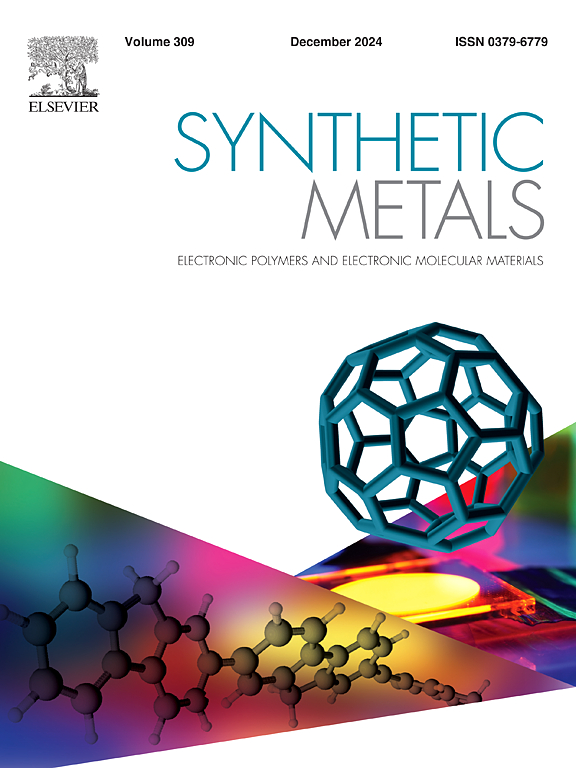Simultaneous trifunctional group passivation using imidazole derivatives for enhanced performance of perovskite solar cells
IF 4.6
3区 材料科学
Q2 MATERIALS SCIENCE, MULTIDISCIPLINARY
引用次数: 0
Abstract
Perovskite solar cells (PSCs) are one of the most promising energy technologies in the field of renewable energy. The solution-based perovskite film-forming method is one of its important advantages in commercialization. However, the polycrystalline perovskite thin films prepared by this method may also exhibit various defects, leading to a decrease in device performance. In this work, an imidazole derivative 1-(2-hydroxyethyl)-3-methylimidazolium chloride (HMCl) was used as a passivator for perovskite thin films. The imidazole moiety and hydroxyl in HMCl passivated the negatively charged I- and positively Pb2+ defects in CH3NH3PbI3 (MAPbI3), respectively. Meanwhile the chloride ion establishes ionic bonds with uncoordinated Pb2+, further enhancing the passivation of defects. With HMCl, the PCE of the PSC was enhanced from 17.53 % of the control device to 19.71 %. In addition, the introduction of HMCl enhanced the hydrophobicity of perovskite films, and therefore, improved the storage stability of PSCs. This study provides an alternative passivator for the development of high-performance and long-term stable PSCs.
咪唑衍生物同时三官能团钝化提高钙钛矿太阳能电池性能
钙钛矿太阳能电池(PSCs)是可再生能源领域中最有前途的能源技术之一。基于溶液的钙钛矿成膜方法是其商业化的重要优势之一。然而,用这种方法制备的多晶钙钛矿薄膜也可能出现各种缺陷,导致器件性能下降。本文研究了咪唑衍生物1-(2-羟乙基)-3-甲基咪唑氯(HMCl)作为钙钛矿薄膜的钝化剂。HMCl中的咪唑基团和羟基分别钝化了CH3NH3PbI3 (MAPbI3)中带负电的I-和带正电的Pb2+缺陷。同时氯离子与不配位的Pb2+形成离子键,进一步增强了缺陷的钝化作用。使用HMCl后,PSC的PCE从控制装置的17.53 %提高到19.71 %。此外,HMCl的引入增强了钙钛矿膜的疏水性,从而提高了聚氯乙烯的储存稳定性。该研究为开发高性能、长期稳定的psc提供了另一种钝化剂。
本文章由计算机程序翻译,如有差异,请以英文原文为准。
求助全文
约1分钟内获得全文
求助全文
来源期刊

Synthetic Metals
工程技术-材料科学:综合
CiteScore
8.30
自引率
4.50%
发文量
189
审稿时长
33 days
期刊介绍:
This journal is an international medium for the rapid publication of original research papers, short communications and subject reviews dealing with research on and applications of electronic polymers and electronic molecular materials including novel carbon architectures. These functional materials have the properties of metals, semiconductors or magnets and are distinguishable from elemental and alloy/binary metals, semiconductors and magnets.
 求助内容:
求助内容: 应助结果提醒方式:
应助结果提醒方式:


